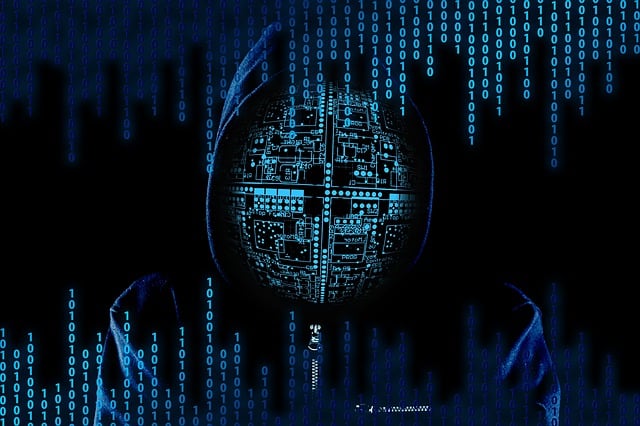Cybersecurity Pros Face the Dual Challenge of Cyberthreats and Compliance

Cybercrime is getting smarter even as I write this. Threat actors today are leveraging Artificial Intelligence (AI) to create and implement highly sophisticated attacks. AI has made phishing and social engineering attacks more effective than ever before. The World Economic Forum’s Global Cybersecurity Outlook 2025 found that nearly 47% of organisations cite adversarial advances powered by Generative AI as a primary concern. It gets worse. Cybercrime is predicted to cost the world $10.29 trillion in 2025, rising to about $16 trillion by 2029. This massive financial loss shows the scale of the danger.
Cybersecurity professionals face the constant battle of defending against increasingly sophisticated cyber threats while also navigating complex, continuously evolving compliance regulations. Balancing these two critical priorities is a defining and complex challenge in the modern digital landscape.
The Dual Challenge Explained
The threat environment is in a state of continuous, rapid evolution, driven by new technologies and geopolitical factors. Threat actors are leveraging generative AI to create more convincing phishing attacks, adaptive malware and deepfake scams that are harder for traditional defences to detect. Meanwhile, the proliferation of Internet of Things (IoT) devices, multi-cloud environments and distributed workforces creates more entry points for attackers to exploit.
Advanced threat actors use methods like supply chain attacks, zero-day exploits and advanced persistent threats (APTs) to infiltrate networks and remain undetected for long periods. As the world becomes increasingly digital, the attackable surface continues to grow.
The Compliance Burden
Compliance is meant to help, but it often falls short. Regulatory compliance is expensive and demanding. It forces companies to spend time and money meeting old rules. The issue is that these rules are not always current with today’s fast-moving threats. Compliance focuses on ticking boxes, not on actual security against emerging AI-driven attacks. Too much effort goes into paperwork instead of frontline defence.
Yet, cybersecurity teams must adhere to a complex and expanding list of regulations. Failure to do so can result in severe financial penalties, lawsuits and reputational damage. The space is complex and fragmented with cybersecurity professionals having to deal with a myriad of overlapping, and sometimes inconsistent, laws and standards from different jurisdictions and industries. Plus, regulatory bodies frequently update and introduce new rules, forcing organizations to dedicate significant resources to staying current.
No wonder then that the average cost of compliance for organizations globally is estimated at around $5.47 million annually, with the financial services sector facing the highest cost at about $30.9 million on average. In the US, the average cost stands at $10,000 per employee. The cost of business disruption and fines can be 2.71 times the cost of compliance, suggesting that compliance efforts aren’t always driving true risk reduction.
Self-Interest is the Best Motivator
Instead of rigid, outdated rules, cybersecurity needs to change its focus. Companies already have a powerful reason to protect themselves. Cybercrime is terrifying to customers. A major breach instantly destroys customer trust. In 2024, 43% of businesses lost existing customers due to a cyberattack. Customers will leave a brand that cannot keep their data safe. Losing customers and damage to brand reputation are a massive financial hit, which can be impossible to recover from for some organisations. Strong security is in every company’s self-interest.
The decision to invest in cybersecurity is a clear example of corporate self-preservation. Companies already recognize that neglecting security is an open invitation to financial ruin. No government body or a team of regulators needs to do anything. No regulatory action can compel a company more than the risk of losing customer trust. Companies will naturally do what is necessary to survive and maintain their reputation. This strong market pressure is a better driver for security than a list of rigid compliance mandates.
Left to themselves, companies will invest in cybersecurity. They will build communities for cybersecurity professionals to share experiences and new lessons to strengthen the fight against evolving threats. This approach is more dynamic than slow-moving regulations. It provides a platform for practical, current defence strategies.
 Rakesh Wadhwa. Ever since, I was a school boy, I knew India was on the wrong path. Socialism was just not what we needed to get ahead. Government controlled our travel; government controlled our ability to buy and sell; and government controlled our freedom to move our money. My life has focused on the inherent rights people have. When I was in college, I never understood, what the governments meant by their "socialistic attitude". If people are free to buy, sell and move their capital themselves without any restrictions by state, then the welfare of people is inevitable & hence the countries they live in will become wealthy. The government has no right whatsoever, to point a finger at me or my business. I am not a revolutionary. I just want to light up my cigarette and not get nagged about it. I believe in non-interfering attitude to attain more.
Rakesh Wadhwa. Ever since, I was a school boy, I knew India was on the wrong path. Socialism was just not what we needed to get ahead. Government controlled our travel; government controlled our ability to buy and sell; and government controlled our freedom to move our money. My life has focused on the inherent rights people have. When I was in college, I never understood, what the governments meant by their "socialistic attitude". If people are free to buy, sell and move their capital themselves without any restrictions by state, then the welfare of people is inevitable & hence the countries they live in will become wealthy. The government has no right whatsoever, to point a finger at me or my business. I am not a revolutionary. I just want to light up my cigarette and not get nagged about it. I believe in non-interfering attitude to attain more. 
 The Bastiat Award is a journalism award, given annually by the International Policy Network, London. Bastiat Prize entries are judged on intellectual content, the persuasiveness of the language used and the type of publication in which they appear. Rakesh Wadhwa won the 3rd prize (a cash award of $1,000 and a candlestick), in 2006.
The Bastiat Award is a journalism award, given annually by the International Policy Network, London. Bastiat Prize entries are judged on intellectual content, the persuasiveness of the language used and the type of publication in which they appear. Rakesh Wadhwa won the 3rd prize (a cash award of $1,000 and a candlestick), in 2006.
What the readers are saying…